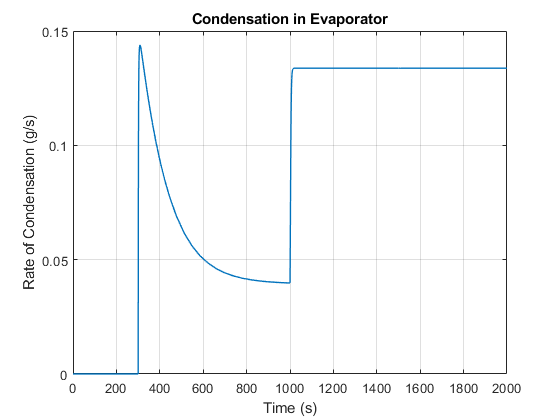La traduction de cette page n'est pas à jour. Cliquez ici pour voir la dernière version en anglais.
Système de chauffage et climatisation de véhicule
Cet exemple modélise le flux d’air humide au sein d’un système de chauffage et de climatisation d’un véhicule. L'habitacle du véhicule est représenté sous la forme d’un volume d'air humide échangeant de la chaleur avec l'environnement extérieur. L'air humide circule à travers un volet de recirculation, un ventilateur, un évaporateur, un incorporateur et un radiateur avant de retourner dans l’habitacle. Le volet de recirculation sélectionne l'admission du flux provenant de l'habitacle ou de l'environnement extérieur. La porte de l’incorporateur dévie le flux autour du radiateur pour contrôler la température.
Le modèle peut être simulé dans deux modes : entrées système prédéfinies ou entrées système manuelles. Pour les entrées système prédéfinies, les paramètres de contrôle du système de chauffage et de climatisation se trouvent dans le sous-système de variant System Inputs. Pour les entrées système manuelles, les paramètres de contrôle peuvent être ajustés au moment de l'exécution au moyen des commandes du tableau de bord.
Le radiateur de chauffage et l’évaporateur sont des implémentations de base d’échangeurs de chaleur utilisant la méthode e-NTU. Il s’agit de composants personnalisés s’appuyant sur la Simscape™ Foundation Moist Air Library.
Modèle
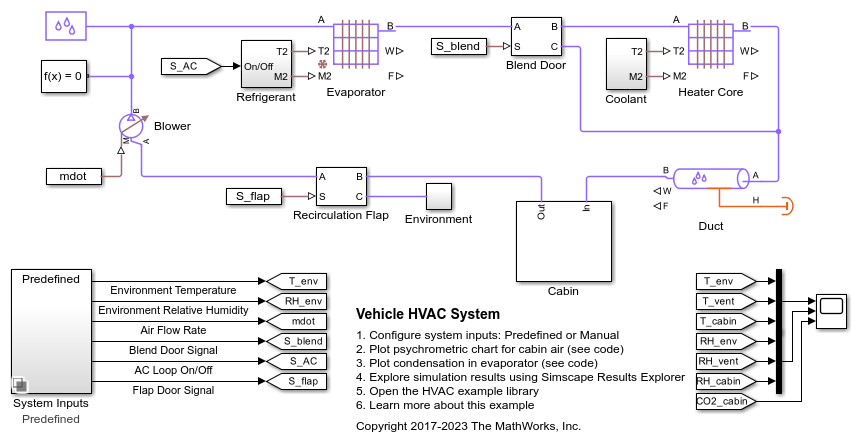
Sous-système Cabin
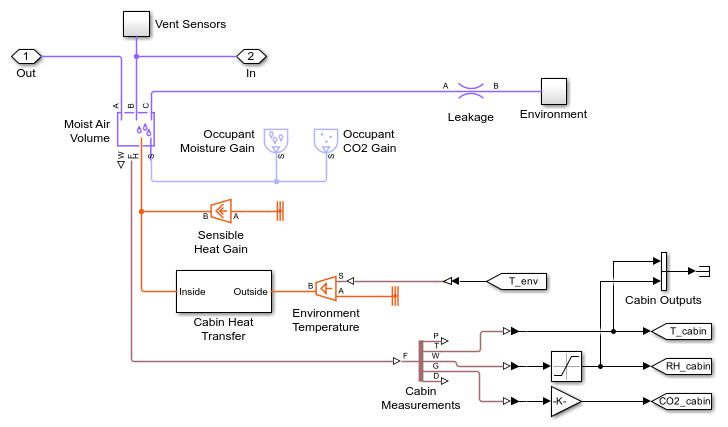
Sous-système Cabin Heat Transfer
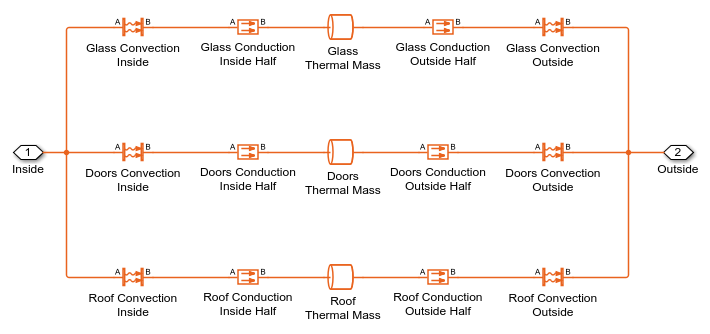
Résultats de simulation générés par les blocs Scope
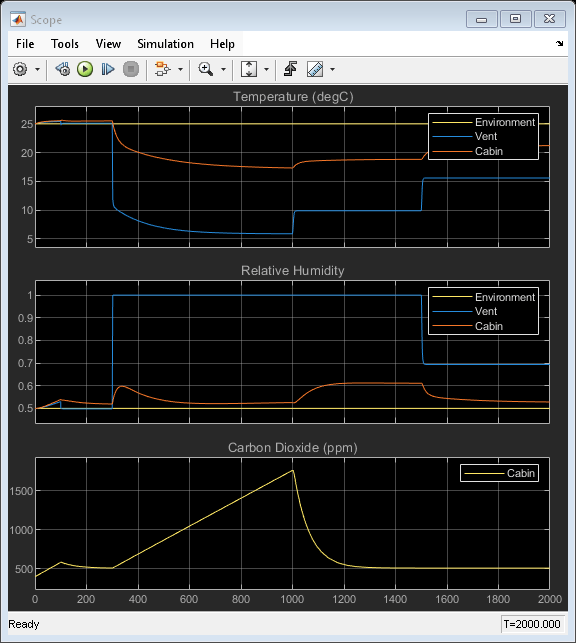
Résultats de simulation enregistrés par Simscape
Cette figure présente un graphique psychrométrique de l’air humide présent à l’intérieur de l’habitacle. Il repose sur le graphique psychrométrique ASHRAE n° 1 et permet de transmettre les propriétés thermodynamiques de l'air humide, telles que la température sèche, la température humide, l'humidité relative, le taux d'humidité, l'enthalpie et le volume. La trajectoire de l'état de l'air humide de l’habitacle pendant la simulation est tracée sur le graphique.

Ce tracé présente le taux de condensation dans l'évaporateur lorsque la climatisation est activée.
